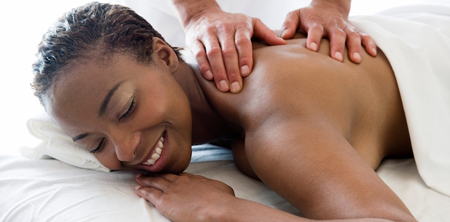Today, massage is not only offered in high-end spas. You can get a massage anywhere from clinics to airports.
If you’ve never tried massage, learn about its possible health benefits and what to expect during a massage therapy session.
What is massage?
Massage is a general term for pressing, rubbing and manipulating your skin, muscles, tendons, and ligaments. Massage may range from light pressing to deep pressure. There are many different types of massage.
Benefits of massage
More Americans are turning to therapeutic massage treatment to provide relaxation, relieve tension associated with the daily stresses of their busy lives, or simply to help maintain good health and achieve a balanced lifestyle.
Studies of the benefits of massage demonstrate that it is an effective treatment for reducing stress, pain and muscle tension.
While more research is needed to confirm the benefits of massage, some studies have found massage may also be helpful for:
Anxiety
If you carry anxiety symptoms in your shoulders, back and neck, a professional massage can specifically target those areas. Regardless of where you carry tension, studies have shown that massage increases your body’s levels of oxytocin and serotonin, which results in lowered stress.
Digestive disorders
By massaging the affected area of the abdomen it can help stimulate the spontaneous movement of the digestive tract (a process called peristalsis) and reduce symptoms such as cramping, bloating, gas, and constipation
Fibromyalgia
Massage therapy can improve chronic pain and fibromyalgia symptoms. Deep relaxation reduces stress, pain, and muscle tension.
Headaches
Massage can ease headaches by targeting points of tension and working them out.
Insomnia related to stress
Massage reduces the stress hormone cortisol, which is constantly telling the body it’s time to wake up.
At the same time, massage increases the neuro-hormone serotonin. This basically is telling your body quite the opposite.
Myofascial pain syndrome
Some massage therapists can even teach you how to pinpoint your own trigger points to release pain.
Soft tissue strains or injuries
Soft tissue techniques such as massage target your muscles, tendons, ligaments, or other connective tissue such as fascia.
Sports injuries
Therapeutic sports massage is a type of massage technique that focuses on treating soft tissue aches, pain, and injuries that are associated with recreational activities. Massage can reduce muscle stiffness and improve relaxation by reducing heart rate and blood pressure.
Temporomandibular joint pain
Friction massage works well on the mandible muscle, which is the lower portion of your jaw just below the masseter, found along your jawline.
Touch the mandible and use your index finger to apply gentle, constant pressure to this muscle.
Beyond the benefits for specific conditions or diseases, some people enjoy massage because it often produces feelings of caring, comfort, and connection.
Note, Although massage offers many benefits it is not to replace regular medical care. so speak to your healthcare provider prior to, and follow up after receiving a massage.
What you can expect during a massage
You don’t need any special preparation for the massage. Before a massage therapy session starts, your massage therapist should ask you about any symptoms, your medical history and what you’re hoping to get out of the massage. Your massage therapist should explain the kind of massage and techniques he or she will use.
In a typical massage therapy session, you undress or wear loose-fitting clothing. Your massage therapist should perform an evaluation through touch to locate painful or tense areas and to determine how much pressure to apply.
Depending on preference, your massage therapist may use oil or lotion to reduce friction on your skin. Tell your massage therapist if you might be allergic to any ingredients.
A massage session may last from 10 to 90 minutes, depending on the type of massage and how much time you have. No matter what kind of massage you choose, you should feel calm and relaxed during and after your massage.
If a massage therapist is pushing too hard, ask for lighter pressure. Occasionally you may have a sensitive spot in a muscle that feels like a knot. It’s likely to be uncomfortable while your massage therapist works it out. But if it becomes painful, speak up.
Finding a massage therapist
Ask your doctor or someone else you trust for a recommendation. Most states regulate massage therapists through licensing, registration or certification requirements.
Don’t be afraid to ask a potential massage therapist such questions as:
• Are you licensed, certified or registered?
• What are your training and experience?
• How many massage therapy sessions do you think I’ll need?
• What’s the cost, and is it covered by health insurance?
The take-home message about massage
Get the idea that a massage is not only a way to feel good and pamper yourself. It has so many other benefits than just feeling good. Massage can quite literally balance your mental, physical and emotional well being.


Recent Comments